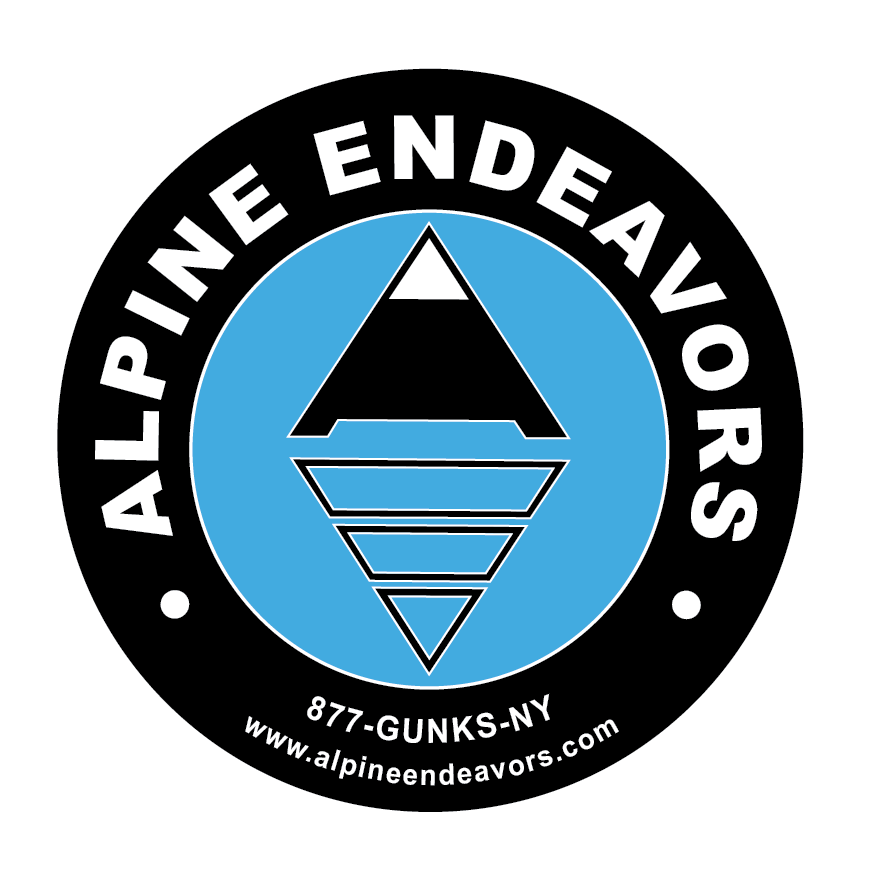Alpine Climbing Equipment List
The list below is for our Alpine Climbs in areas such as the North Cascades, Katahdin and Mount Washington. Please keep in mind that the equipment you choose to bring can greatly affect the quality of your experience. Each trip and climb is slightly different, please discuss the objectives with your guide and adjust accordingly.
During our trips we will try to spend a great deal of time the mountains. In order to maximize our time there, everyone needs to travel as easily as possible while still carrying needed gear. In general you should select lightweight equipment, and avoid carrying anything extra that can be reasonably duplicated by other items you already have packed. All technical climbing equipment will be provided by Alpine Endeavors. However if you have your own gear, feel free to bring it.
Equipment:
Climbing gear:
Climbing pack* - to carry all your stuff and climb with (+/- 3000 cui)
Camelback hydration system - or similar, great to use while climbing
Helmet*
Harness* - with a locking carabiner*, belay device*, and chalk bag*
Rock shoes* - for long routes, snug but not too tight is key
Ice Axe* - lightweight and not too long (under 60cm), leashes are generally not used - BD Venom, Grivel Evo, etc.
Ice Tools* - if longer ice routes are planned - bring two tools
Crampons* - 10 or 12 point, flatpoint crampons that fit your boots
3 or 4 locking carabiners designed for use with the Munter hitch.
2 double-shoulder length runners with 2 carabiners each
2 single-shoulder length runners with 2 carabiners each
Cordelette - 5-6 meters of 6mm or 7mm of pure nylon cord. Tech cords are not as helpful for rescue work and hitches
Prussik set - one waist loop and one foot loop set of cords
Headlamp - with extra batteries
Toiletries (medications, sunscreen, bug spray, toilet paper, etc.)
Sunglasses
Camera - optional
Camping Gear:
Keep in mind that on certain climbs, we may be climbing with all of our gear - so light is right.
Sleeping Bag - Temp's are usually in the 20's to teens at night.
A 20-30 degree bag is usually sufficient.
Sleeping Pad - Therma Rest or Ridge Rest
Tent - lightweight - you can share one with your guide
Back Pack - 4000 - 5000 cubic inches to carry all on the approach
Back pack liner - to pack your gear in to keep it dry - either large garbage bags, or better yet Sea to Summit pack liners
Stove* - each party with guide will share a stove
Fuel* - we will pick this up before we head out
Cook Pots* - compact and very light
Plastic Bowl, Mug, & Eating Utensils - Compact and very light
Lighter and Matches
Water Bottles - camelbacks work well, bring a nalgene bottle as well
Water Purification* - tablets or iodine drops are simplest, guides will provide
Pocket Knife/tool - for repairs, etc.
Repair Kit - crampon adjustment tools, etc..
Medical Kit - small, but with the basics
Sun Glasses - 100% UV - wrap-a-round work fine, glacier glasses are better
Sunscreen & lip protection
Personal Toiletries - t.p, wet wipes, etc
* Items with an asterisk are available for loan through Alpine Endeavors
Food:
• Freeze dried mountain dinners will be provided. You need to provide breakfast and lunches.
Clothing:
Wear items that you can move comfortably in and try to layer when possible - NO COTTON!
Rain Parka with Hood - Gore-tex or other water resistant and breathable material recommended. Invest in something very light and compact
Rain Pants - be sure they have full side-zips on the legs. Gore-tex, etc., something very light and compact
Windshirt - optional but handy
T-shirt - synthetic or wool (capalene, coolmax, merino, etc.)
Long-sleeved shirt - light colored for sun protection - silk weight capalene, coolmax, etc.
Synthetic underwear bottoms - capalene, coolmax, etc.
Long Underwear tops & bottoms - capalene, bergaline, merino, etc.
Pants, not shorts - preferably synthetic (nylon, polyester, etc)
Climbing Pants - relatively light synthetic pants, preferably with a hard and durable finish. IE - Mammut Champ Pant, Patagonia Guide pant, etc.
Climbing Shorts - relatively light synthetic shorts
Fleece Jacket - 100weight Polartec is a good weight for this garment
Down Sweater/Jacket - very useful for the higher peaks and for bivouacs. Again, lightweight - an 8,000 meter parka will be too much.
Gloves - leather gloves treated with a waterproof wax seem to work best for rope handling and durability. Look in the hardware store for them.
Shelled and Insulated Gloves - light enough to wear while working with gear. Bring a gore-tex pair
Warm Hat - basic fleece
Sun Hat -
Gaiters - ankle gaiters are sufficient
Socks - synthetic, be sure they work well with your boots. All socks change the volume of your feet. Look for Darn Tough, Bridgedale, Smart Wool, etc.
Boots - a reasonably stiff leather boot is the best choice for climbing most peaks in the Cascades. A recommendation for boots would be to look for the La Sportiva Trango S EVO, and the Scarpa Charmoz Both are Gore-tex.
Be sure your boots are well-broken in before arrival. Blisters will ruin your trip.
Camp Shoes/Sandals - optional - to wear around camp to give you feet a break from the boots.
Note: If you wear contact lenses you should bring a pair of glasses as a back up.
